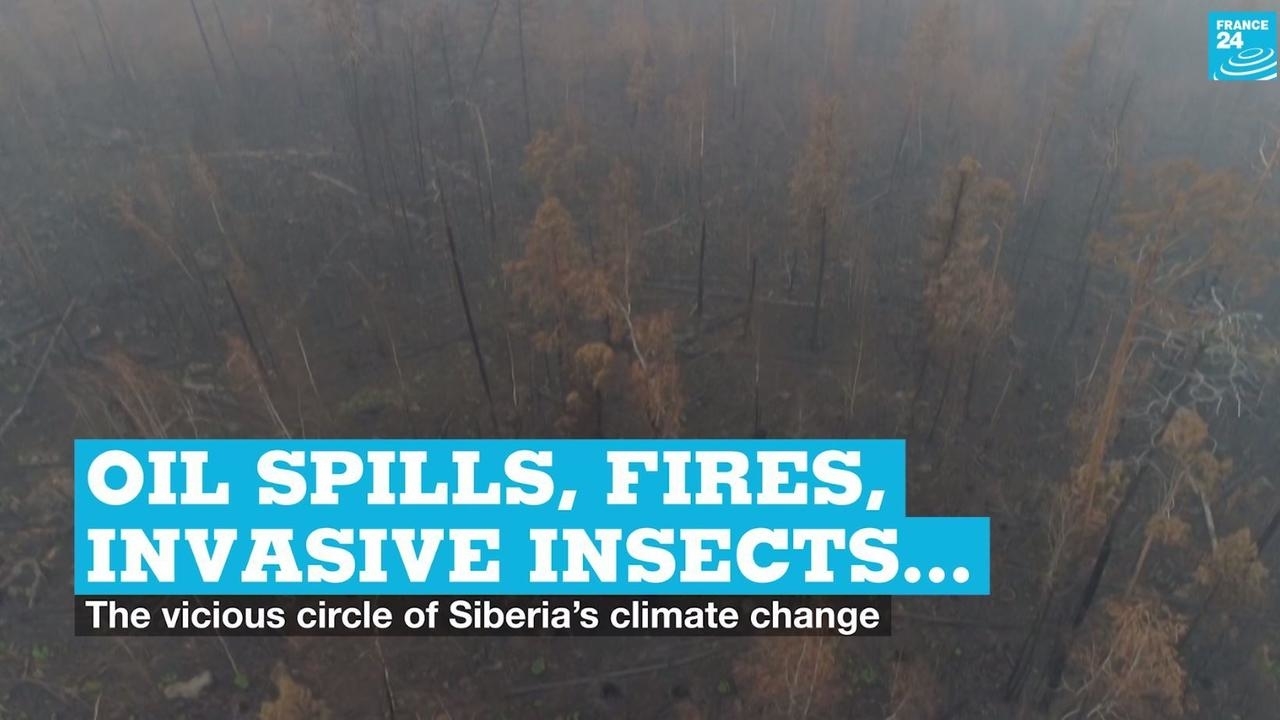Issued on: Modified:
On May 29, 21,000 tons of diesel fuel from the storage tank of a thermal power station in Siberia spilled onto the icy tundra and into rivers in one of the worst environmental disasters the Russian Arctic has ever seen and the result of what experts say is a vicious circle of climate change in the region.
Advertising
Read more
The owner of the thermal power plant has blamed the spill, which authorities say may take several years to clean up, on the subsidence of the tanks supports caused by the thawing of the permafrost – a layer of normally permanently frozen ground – below.
The thawing permafrost is the result of rising temperatures caused by global warming, but could itself lead to accelerating climate change.
“We know that permafrost contains huge amounts of carbon, roughly twice the volume of what is in the atmosphere today. This carbon is frozen, protected, locked in. If the permafrost thaws, this carbon could be released,” Antoine Séjourné, a geomorphologist, Université Paris Saclay, told FRANCE 24.
“Carbon-rich gases would be released: CO2, methane, extremely powerful greenhouse gases. That would accelerate global warming and that would re-thaw the permafrost. It creates a feedback loop and then youre in a vicious circle.”
The harmful effects of global warming have been evident in Siberia for several years. In particular, warm winters and mild springs have seen a rise in forest fires.
“Forest growth is dictated by the temperature. As temperatures rise, the forest colonises places that were previously too cold,” said Séjourné.
“We know that global warming intensifies extreme weather events: droughts, heavy rains… It gives energy to the thermal mechanics of the climate. Therefore, forest fires are more likely to develop in already fragile ecosystems.”
With the expansion of the forests, the number of fires is increasing. An average of six million hectares of forest burned down everRead More – Source
Issued on: Modified:
On May 29, 21,000 tons of diesel fuel from the storage tank of a thermal power station in Siberia spilled onto the icy tundra and into rivers in one of the worst environmental disasters the Russian Arctic has ever seen and the result of what experts say is a vicious circle of climate change in the region.
Advertising
Read more
The owner of the thermal power plant has blamed the spill, which authorities say may take several years to clean up, on the subsidence of the tanks supports caused by the thawing of the permafrost – a layer of normally permanently frozen ground – below.
The thawing permafrost is the result of rising temperatures caused by global warming, but could itself lead to accelerating climate change.
“We know that permafrost contains huge amounts of carbon, roughly twice the volume of what is in the atmosphere today. This carbon is frozen, protected, locked in. If the permafrost thaws, this carbon could be released,” Antoine Séjourné, a geomorphologist, Université Paris Saclay, told FRANCE 24.
“Carbon-rich gases would be released: CO2, methane, extremely powerful greenhouse gases. That would accelerate global warming and that would re-thaw the permafrost. It creates a feedback loop and then youre in a vicious circle.”
The harmful effects of global warming have been evident in Siberia for several years. In particular, warm winters and mild springs have seen a rise in forest fires.
“Forest growth is dictated by the temperature. As temperatures rise, the forest colonises places that were previously too cold,” said Séjourné.
“We know that global warming intensifies extreme weather events: droughts, heavy rains… It gives energy to the thermal mechanics of the climate. Therefore, forest fires are more likely to develop in already fragile ecosystems.”
With the expansion of the forests, the number of fires is increasing. An average of six million hectares of forest burned down everRead More – Source










